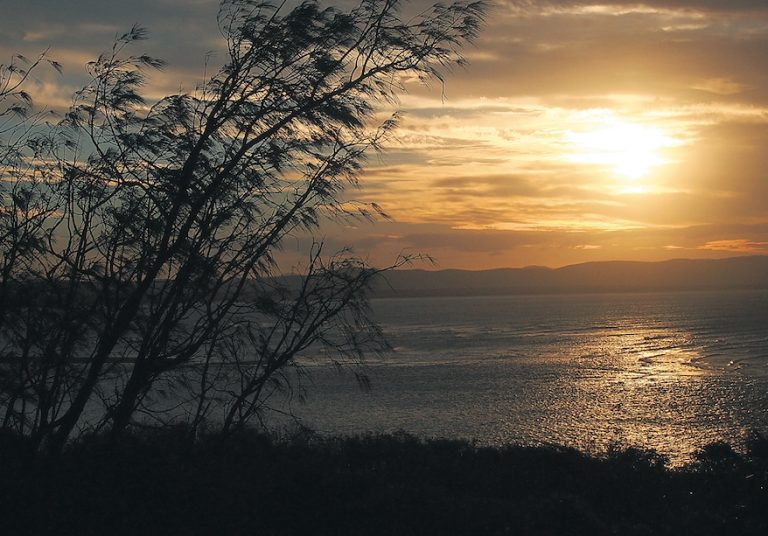Agnes Water Fishing – Clayton Nicholls June 2013
Not long after arriving in Agnes Water I was out and about exploring the place, scouting for the perfect spot to lay some line in. As anyone knows, to find the honey holes, talk to the locals. They are the people who know the area best.
This is why I went straight to 1770 Bait and Tackle to talk to Tony, otherwise known as “Agnes Jack”. He and his border collie named Squidgy kindly greeted us at the entrance. Tony explained to me on his laminated mud maps where the places were for the fish I was chasing.
Tony also explained to me that the rock fishing is crazy at times in this area, with the best rock fishing coming from the 1770 headland known as “the catwalk”.
Now, some of the stories I heard were pretty unbelievable, but he had the photos to prove it: Spaniards, tuna and even marlin all plucked from the rocks on what looked like some pretty unruly shore-casting combos. I wasn’t here for these fish though; I was here for the estuary species.
The gear for the job at hand was a 762 Raider, which essentially is a 2-4kg flats stick, and 6lb braid on a 1000 Stradic reel. Anything of this weight range (2-4kg) would be ideal.
Everyone knows that the first cast is always the most nerve-racking and can decide whether a fish will jump right on or whether you have gone hopelessly wrong.
In this instance, however, it proved to be right on the money. The soft plastic yabbie imitation got worked from one set of rocks slowly towards me, however, the current swept the plastic down towards another set of rocks where I let it settle before working the plastic back again.
Then came the massive strike as a fish emerged from the sand and took off like a lizard on a hot footpath. Once I got the fish (which I picked as a flathead) back to the small rocks I was fishing from I had to try and land this big fish and set it free without causing it too much stress. It was quite the operation, I can tell you!
Flathead often take lures more for their imitation than their movement. This is why yabbie and prawn imitations work so well on the bigger lizards.
These lures are best worked slowly with three twitches on each rod lift, then left to sit a little before the action is repeated. Also try rigging these lures the way they would naturally swim.
The next spot recommended by Tony was the marina. Tony had explained that you get many bream around the marina area, especially on the floating pontoon in the water, so we decided to fish off that. The bait hooks came out to send some lightly-weighted hardy heads and prawns to the weed below.
The fish went pretty crazy over these baits, with a variety of species caught including grunter, whiting, Moses perch and, yes, of course, bream. On the rod we ran some eight pound fluorocarbon leader off our six pound braid mainline. On the leader was a size 0 sinker and a size 4 Mustad Bloodworm hook.
Using braid with the bait definitely helps, especially with hi-vis braids where you can see the fish taking up slack line so you know when to strike and set the hook. The next bit of invaluable local knowledge was from one of the guys at the LARC tours.
When we were trying to book a tour the topic got onto fishing and, yet again, I got suckered into buying a map as he pointed out good spots on the map to try.
A few were four wheel drive access only but others were in areas with stunning backdrops and involved long hikes that turned short due to a misread .4km sign. The first spot we were shown was on a dirt trail near the SES oval. Unfortunately it had rained a fair bit the day previous, so any attempt at this trail got worse and worse as the holes of water got deeper.
The area we were headed too was Toms Creek, rumoured to be full of jack, cod, queenfish and many other species a lure fanatic would love to chase. Apparently the go-to lure is a small, shallow-diving, hard-body minnow.
Upon exiting this path we made our way to what the locals call Monument Point, basically the point down the steps from Cooks Monument, but this area seemed to be riddled with Moses perch. With the waves picking up and the entire area getting windy, we stopped for a quick flick at Round Hill Head, landing a bream or two and seeing a large turtle as the sun went down. I will be back.
‘fish light, get the bite’





